pluto
Latest

Paramount+ snags long-awaited 'Halo' TV series from Showtime
ViacomCBS executives announced on Wednesday that the upcoming Halo television series will be hosted on its Paramount+ streaming service rather than Showtime.

This portable, rechargeable synth focuses on the pretty side of modular
Pluto is the latest instrument to try and shrink modular synthesis down to something portable and battery powered.
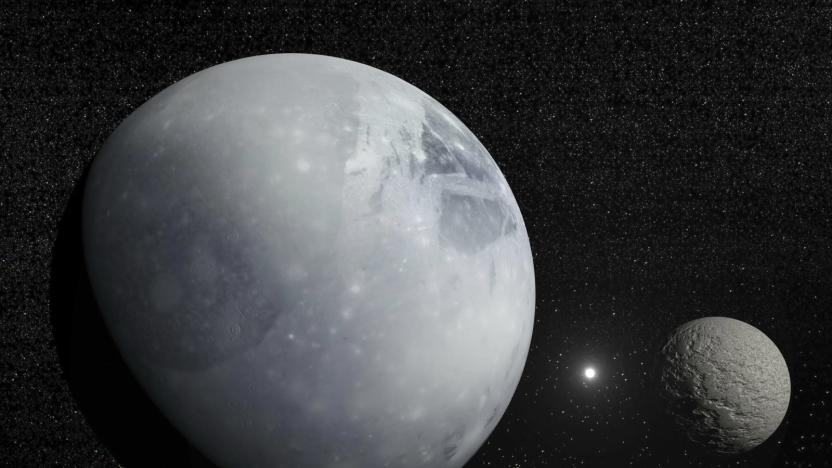
New Horizons photos shed more light on Kuiper Belt
Those of you following NASA's New Horizons know the interplanetary space probe made the farthest-ever flyby in human history on New Year's Day, when it circled Ultima Thule, an object in Kuiper Belt. Now, a discovery from New Horizons' 2015 trip around Pluto and its satellite Charon sheds even more light on Kuiper Belt, a donut-shaped region of icy bodies beyond Pluto. Analyzing photos from the probe's flyby of Pluto and Charon, scientists have discovered a surprising lack of small objects in the belt.
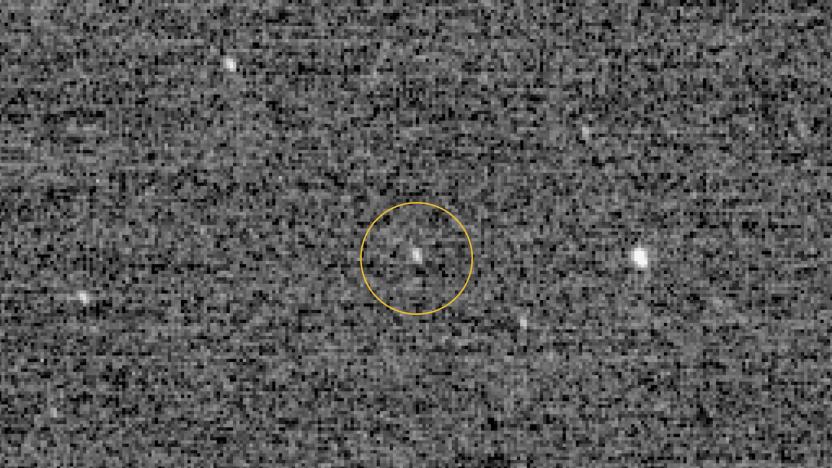
NASA will reach its most distant target yet on New Year's Day
While we're welcoming the new year here on Earth, NASA's New Horizons spacecraft will be ringing in 2019 with a flyby of a very distant object in our solar system. In 2015, New Horizons gave us our best look yet at Pluto, and ever since, it has been heading towards a distant Kuiper Belt object known as Ultima Thule. On January 1st, 2019, it's scheduled to reach Ultima Thule, where it will collect detailed images and other data as part of the most distant exploration of a space object to date.
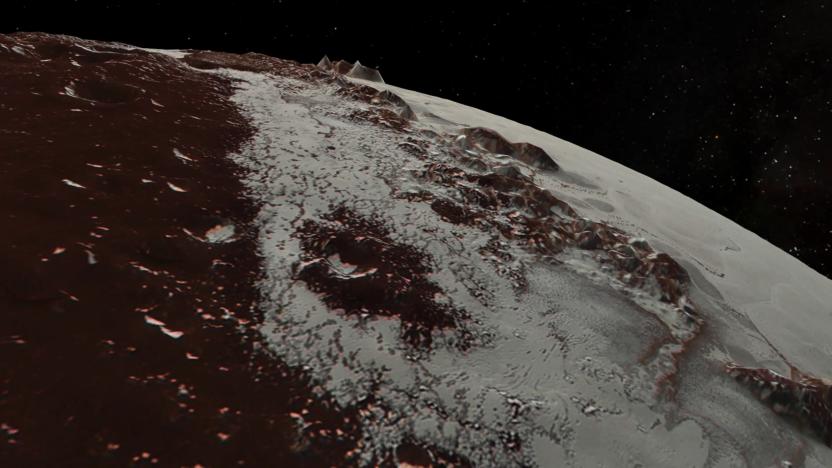
Fly over Pluto and Charon in the latest NASA footage
The New Horizons spacecraft may have moved on from Pluto, making a long march to the Kuiper Belt, but we're still deep in the process of analyzing the data it sent back. Now, for the spacecraft's one-year anniversary of its Pluto flyby, NASA has released two new videos based on digital elevation models and New Horizons' data of both Pluto and Charon. The Pluto flyover begins in Sputnik Planitia, a nitrogen ice field bordered by craters on one side (Cthulhu Macula) and mountains on the other. It moves north to Voyager Terra, which are rugged highlands, and then sweeps over the pits and craters of Pioneer Terra. The flyover ends over Tartarus Dorsa. The Charon flyover, meanwhile, surveys the canyon Serenity Chasma, before sweeping over Dorothy Gale crater and Mordor Macula, the dark polar hood of Charon. The flyover then moves south, covering an area called Oz Terra before ending at the Vulcan Planum plains and Clarke Montes mountains. It's important to note that the topographic features have been exaggerated in these videos to really give you an idea of what the landscape of Pluto and Charon are like. Additionally, NASA enhanced the colors of both dwarf planets' surfaces.
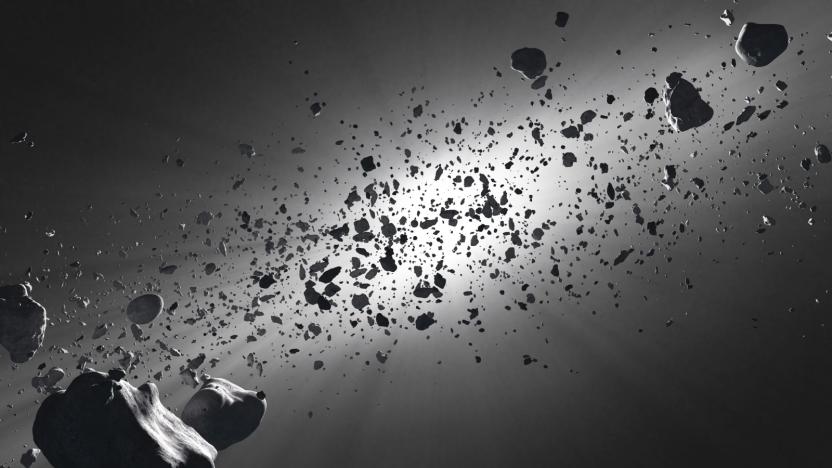
'Asteroid Day' is a good time to learn about the threat of space rocks
On June 30th, 1908, more than 770 square miles of remote Russian forest were obliterated from the face of the Earth when a relatively small meteor, estimated at only around 400 feet across, unleashed 15 megatons of energy above the Stony Tunguska River. One hundred and nine years later, humanity knows precious little more about the dangers that lurk within our solar system than we did in 1908. But a recently founded "global day of education" aims to bring the existential threat that space rocks pose to the forefront of our collective consciousness.
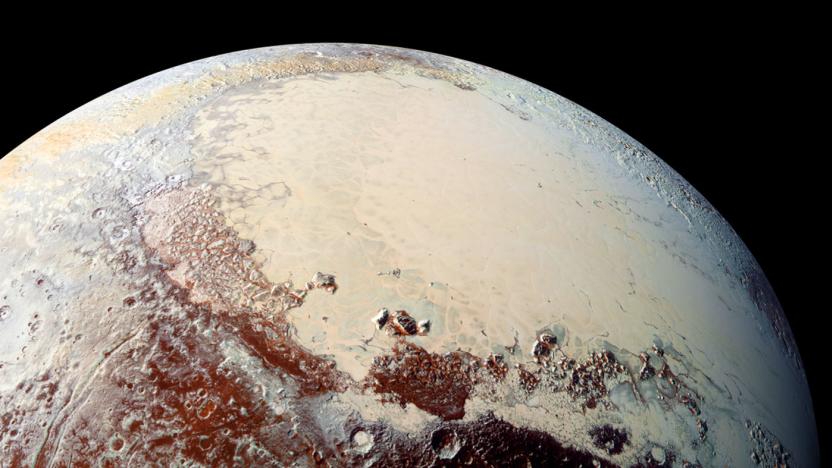
New Horizons scientists want to redefine what planets are
Alan Stern and his fellow New Horizons scientists really want Pluto to become a full-fledged planet again. The principal investigator of NASA's mission to Pluto, along with a few members of his team, want to change the definition of planets. According to the proposal they intend to present at the Lunar and Planetary Science Conference, they want the word "planet" to define any "sub-stellar mass body that has never undergone nuclear fusion and that has sufficient self-gravitation to assume a spheroidal shape adequately described by a triaxial ellipsoid regardless of its orbital parameters." In simpler words, they want the word planet to describe all "round objects in space that are smaller than stars."

NASA is crowdsourcing the search for exoplanets
To those of you who dream of going to space: Sorry, but that may never happen. However, NASA is once again counting on the public for help understanding what's beyond our world. All we have to do is look at some photos online. Today marks the launch of Backyard Worlds: Planet 9, a project that relies on everyday people to help scientists identify objects near our solar system. These celestial bodies appear to move across the sky, but computers have a hard time finding things like brown dwarfs and planets in the noisy images. This means manually searching the photos is the most effective method to get the job done.

ICYMI: Flapping wind turbines and Dubai's firefighting jetpacks
Today on In Case You Missed It: The Dubai Civil Defence treated us to an impressive -- and fantastically dramatic -- video demonstrating its 'Dolphin' system which consists of a jetpack connected to a Sea-Doo water craft. The jetpack uses water pressure to lift the wearer into the air to provide rescuers with better vantage points in emergency situations. The system includes a thermal camera to aid in search and rescue missions, but is largely intended for situations that occur near waterways and bridges.
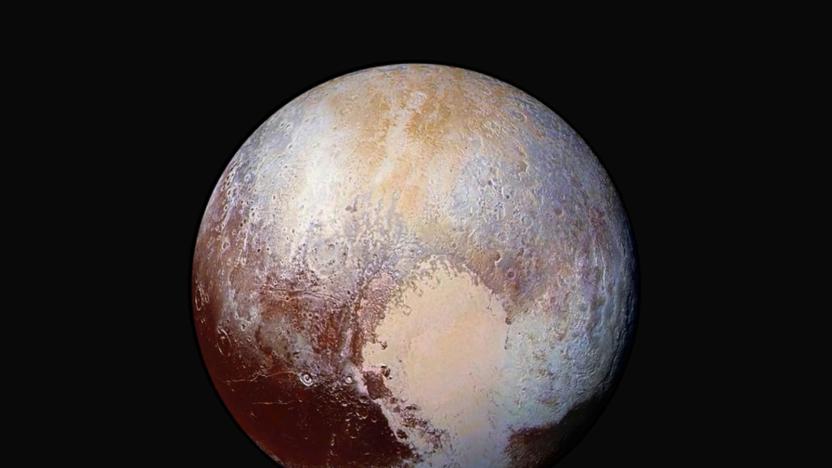
Researchers offer new evidence of a liquid ocean on Pluto
Pluto may have lost its official planet status, but the frozen world at the edge of our solar system still deserves a closer look. That's the end goal of two new studies of Pluto published in the journal Nature this month, both of which focus on Sputnik Planitia -- a 1,000-kilometer long basin covered in frozen nitrogen. As Wired notes, both papers agree that Sputnik Planitia's mass is likely responsible for throwing Pluto off its axis and creating Charon's tidal alignment, but they differ in their explanations of how a dent in the planet's surface could actually be so massive.
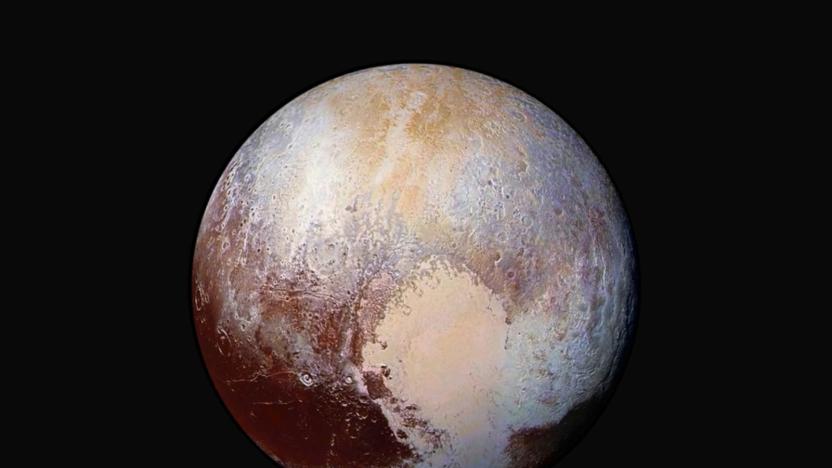
NASA's New Horizons has sent back its last data from Pluto
The New Horizons probe had just one shot at gathering as much data from Pluto as it could, a process that took more than a day. But it's taken the past fifteen months to actually receive all 50-plus gigabytes of data that it captured. NASA announced this morning that the probe has finally sent back the last bit of data, a Pluto and Charon infra-red sequence. Next up, NASA plans to double-check the data it's received before wiping New Horizons' data recorder. Its next stop: the Kuiper Belt.
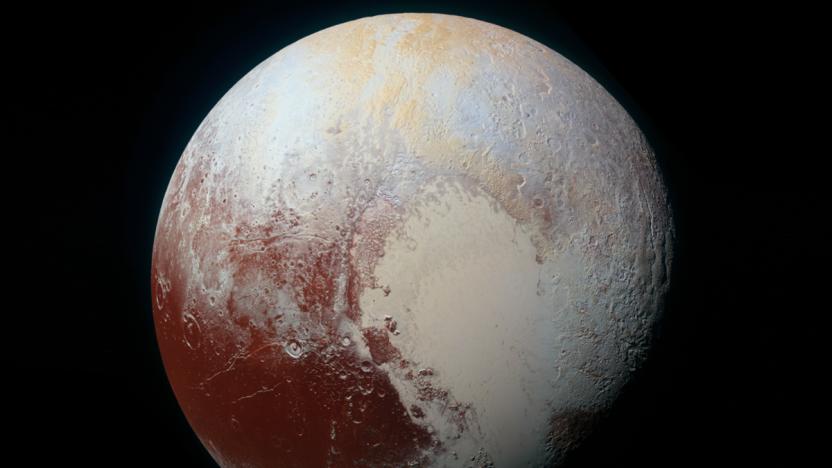
Pluto may have a 60 mile deep liquid water ocean
We used to think of Pluto as a remote frigid rock, but since the New Horizons visit, it's vying for the title of the solar system's most interesting (ex-) planet. An earlier study showed that its core is warm enough to support a liquid water ocean, and now we've learned that it might be huge -- at least 100 km (62 miles) deep. The evidence, according to the team from Brown University, comes from a likely impact with massive asteroid.

Pluto's moon Charon got its red toupée from the dwarf planet
NASA's New Horizons spacecraft showed us a part of Charon we'd never seen before: a rusty red section crowning its polar region. It's an intriguing feature, something the mission's ground team hadn't seen before, so they spent the past year studying all the data and images the probe sent back. Now, they have their answer. The red cap is apparently the product of methane gas escaping the dwarf planet itself and freezing solid in the frigid pole. Team leader Will Grundy, likens Pluto to a "graffiti artist, spray-painting its companion with a reddish stain that covers an area the size of New Mexico."
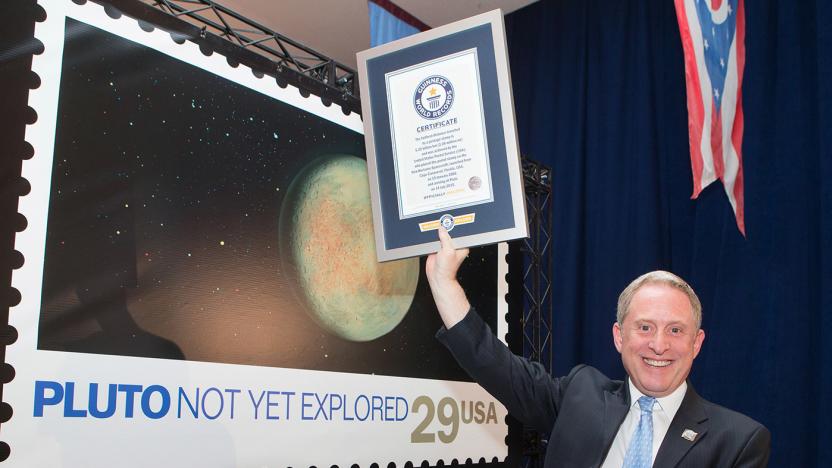
Pluto stamp earns world record for traveling 3 billion miles
"Pluto: Not Yet Explored" is the envy of all stampkind. It has officially earned a Guinness World Record for the farthest distance traveled by a postage stamp after journeying for 3.26 billion miles aboard the New Horizons. NASA stuck it aboard the probe when it took off in 2006 but has since issued new ones celebrating the spacecraft's successful exploration of the dwarf planet.
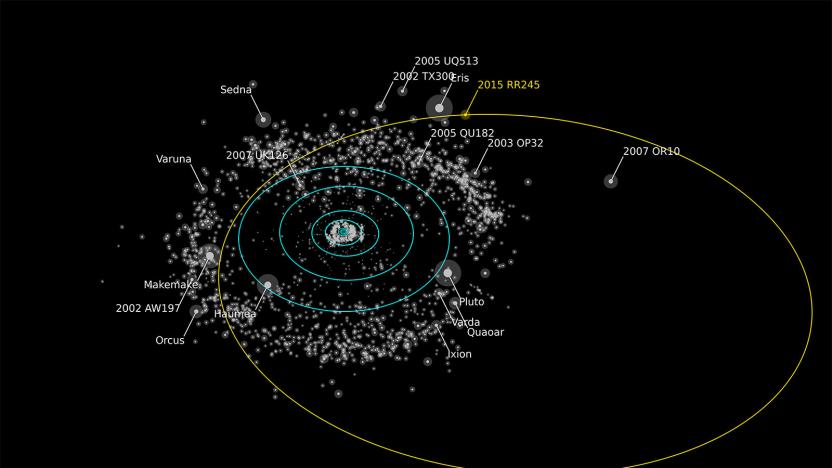
Hawaiian telescope spots a new dwarf planet beyond Neptune
Just beyond Neptune lies a ring of small, icy worlds that offer insight into the formation of our Solar System, and scientists using the Canada-France-Hawaii Telescope on Maunakea, Hawaii, just discovered a new dwarf planet in this region that rivals Pluto and Eris in visibility. It's called RR245 and in this case, size matters -- many of the worlds in the farthest reaches of the Solar System are too small and dull for Earthbound scientists to study. Basically, when it comes to post-Neptune dwarf planets, the bigger and brighter, the better.
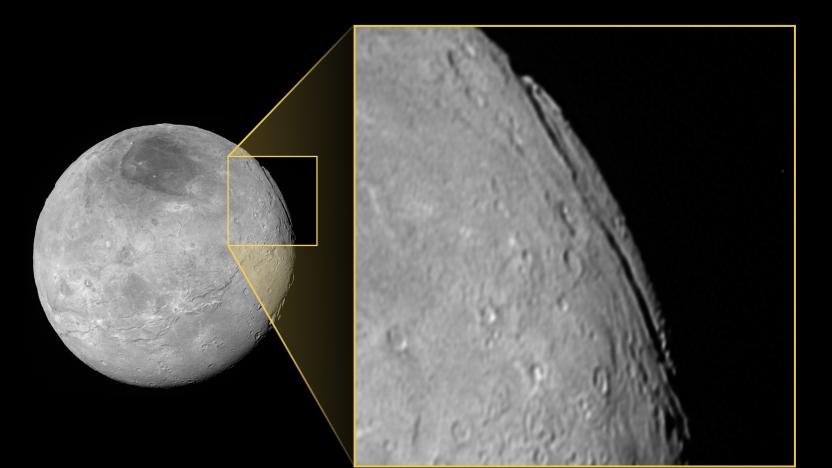
Pluto's moon Charon features a massive, deep chasm
While humans are still a long way away from going canyoneering on the moons of Pluto, we can at least start scoping out the terrain. In images shot last summer by NASA's New Horizons spacecraft, we can see one immense and interesting feature of Charon: a deep canyon dubbed the Argo Chasma that slices through one hemisphere of Pluto's largest satellite.
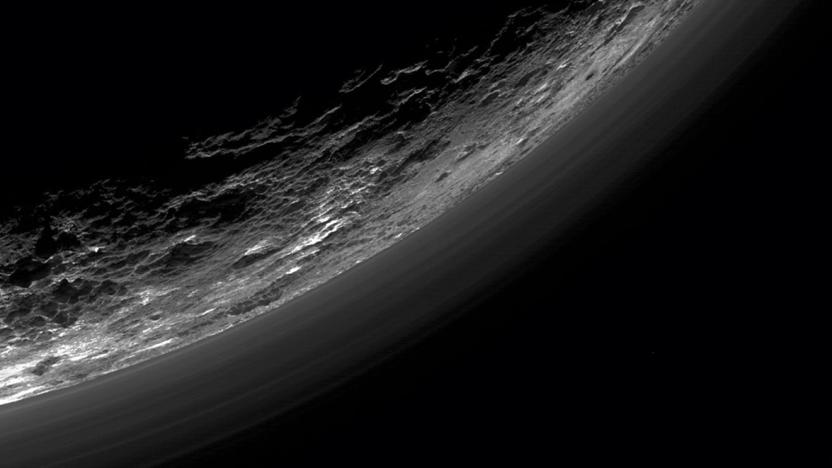
Pluto might still have an ocean underneath its icy shell
Thanks to New Horizons, we now know just how complex Pluto's surface is, with its mountain ranges, deep cracks, volcanoes, canyons and heart-shaped plain. Scientists think those tectonic features are the result of a subsurface ocean slowly freezing over. According to a study led by Brown University graduate student Noah Hammond, though, tha ocean might still exist in liquid form even today. The team took into account all the data the probe gathered, such as Pluto's diameter and density to simulate a large body of water transforming into ice. Turns out the dwarf planet would have shrunk if the water its crust is hiding froze long ago. Its surface would have looked much different.

Backlit Pluto photo shows evidence of possible clouds
Can't get enough of the ninth planet-no-longer in our solar system? Neither can NASA, which continues to receive images that its New Horizons spacecraft took on its Pluto flyby last year. One shot on July 15th caught the dwarf planet backlit by the sun, which revealed never-before-seen atmospheric phenomena that might just be the first evidence of clouds.

USPS debuts stamps with New Horizons' view of Pluto
To honor NASA's discoveries, the USPS is debuting new stamps today with images from outer space. The "Views of Our Planets" series will get new images of Mercury, Venus, Mars, Jupiter, Saturn, Uranus, Neptune and the iconic "blue marble" view of Earth. Thanks to the New Horizons mission to Pluto, there's a special set of two stamps with a snapshot from July's flyby and the spacecraft itself. The eight new planet stamps are available at post offices and online, but the Pluto stamps will be sold only on the web. If you're looking to add a few to your collection, the entire set is available starting today.
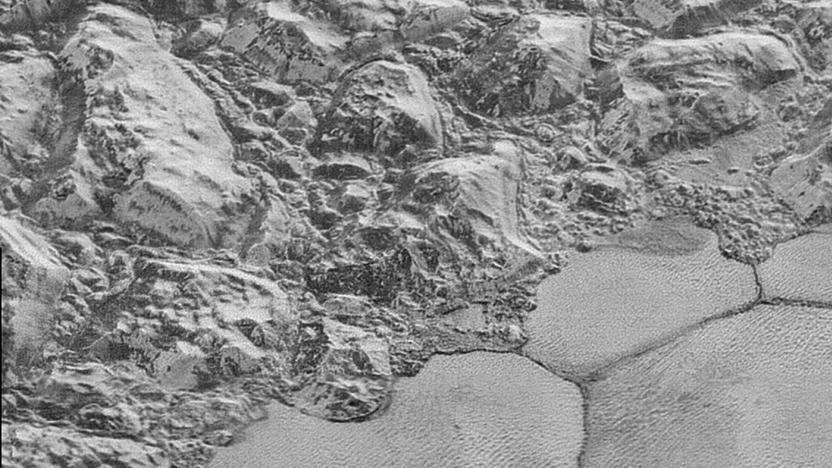
NASA gets a better picture of Pluto's surface
Back in December, NASA shared its best Pluto close-ups gathered by New Horizons. It was a detailed, but incomplete set -- now, the plucky probe has transferred more data back to Earth, allowing researchers to stitch together the rest of the picture. The new "mosaic strip" covers a larger part of Pluto's surface -- a diagonal segment crossing the face of the dwarf planet while New Horizons flew by on July 14th, 2015. You can take a look at the full image here, or watch a brief tour video NASA has put together.













